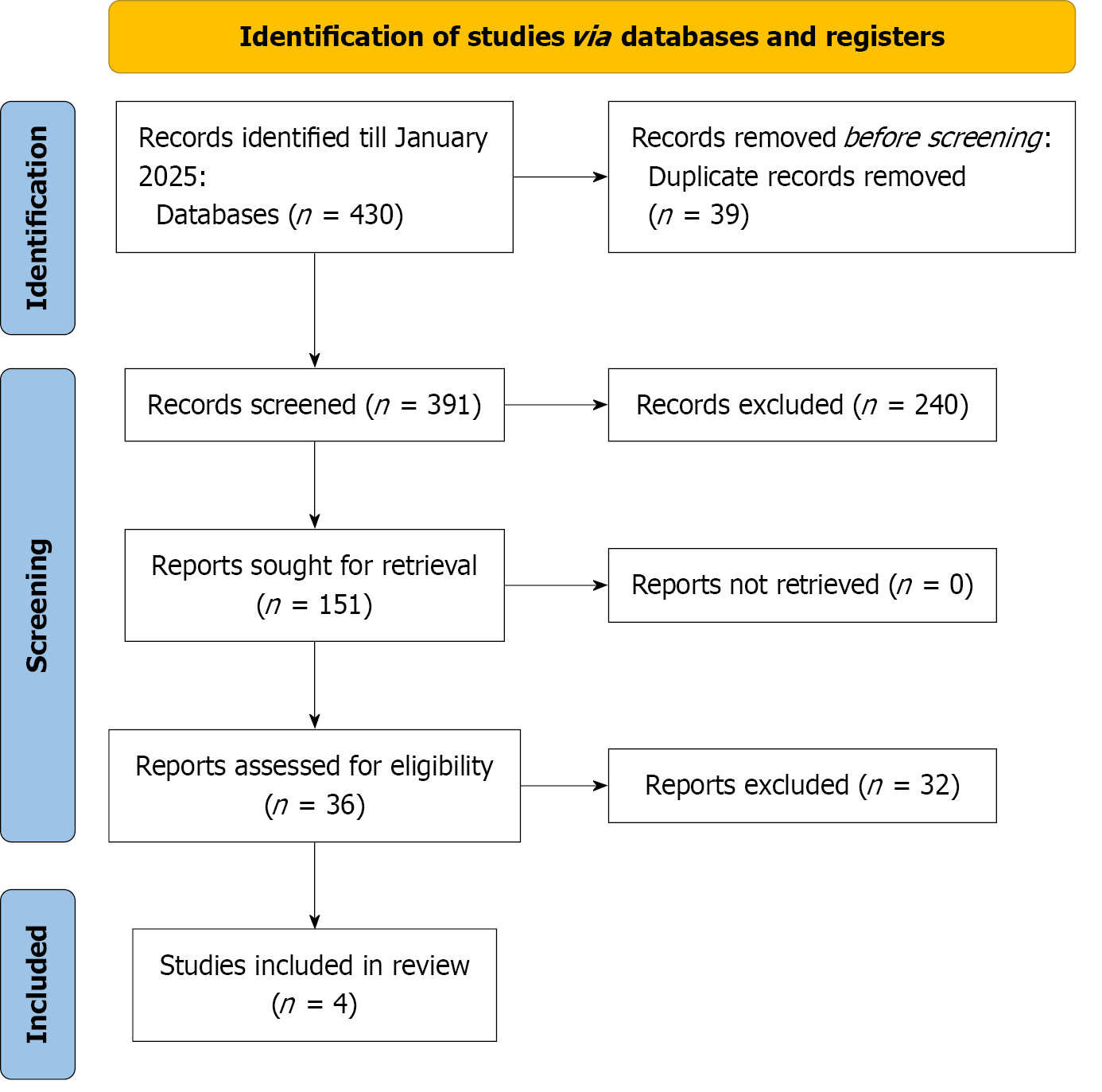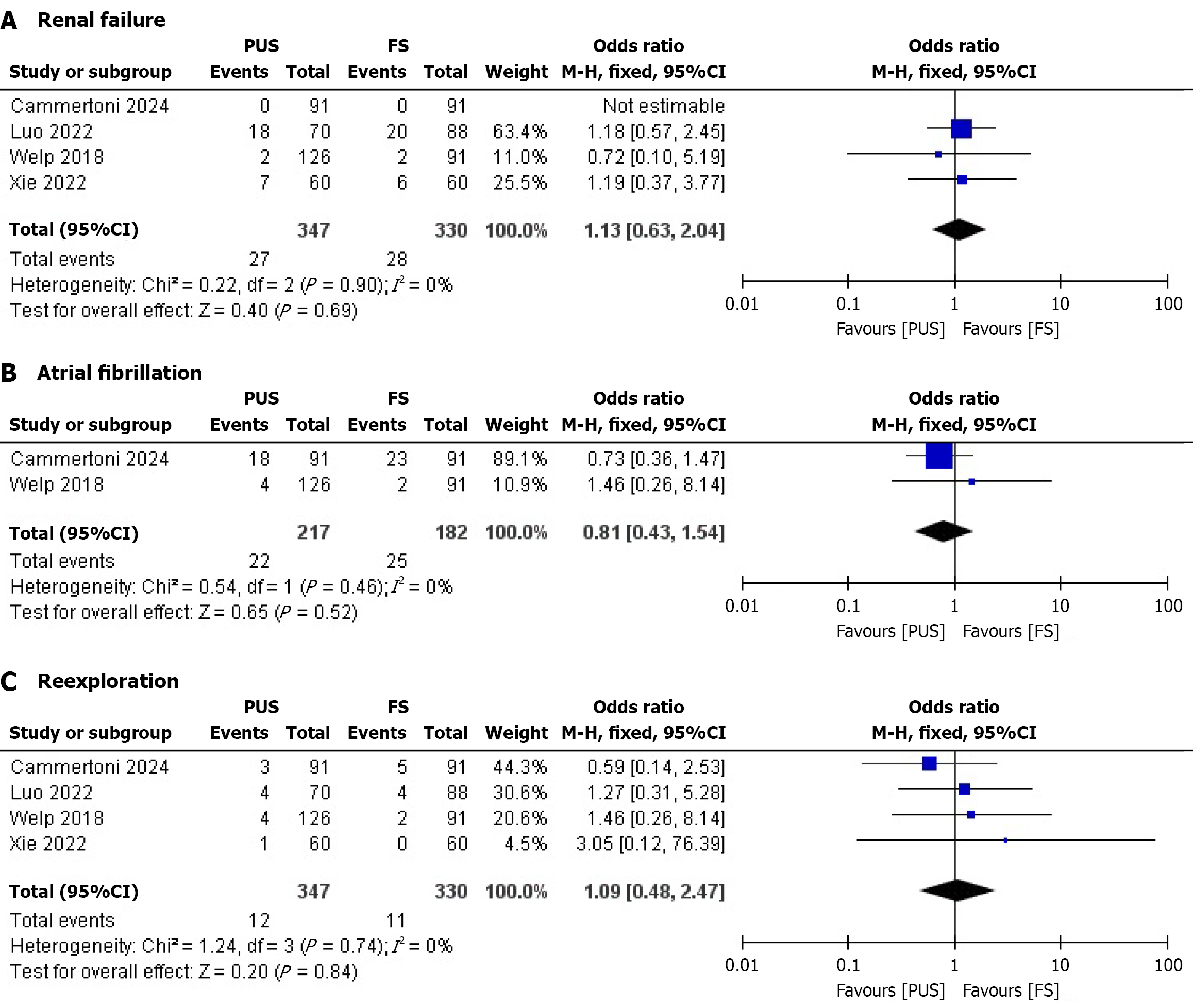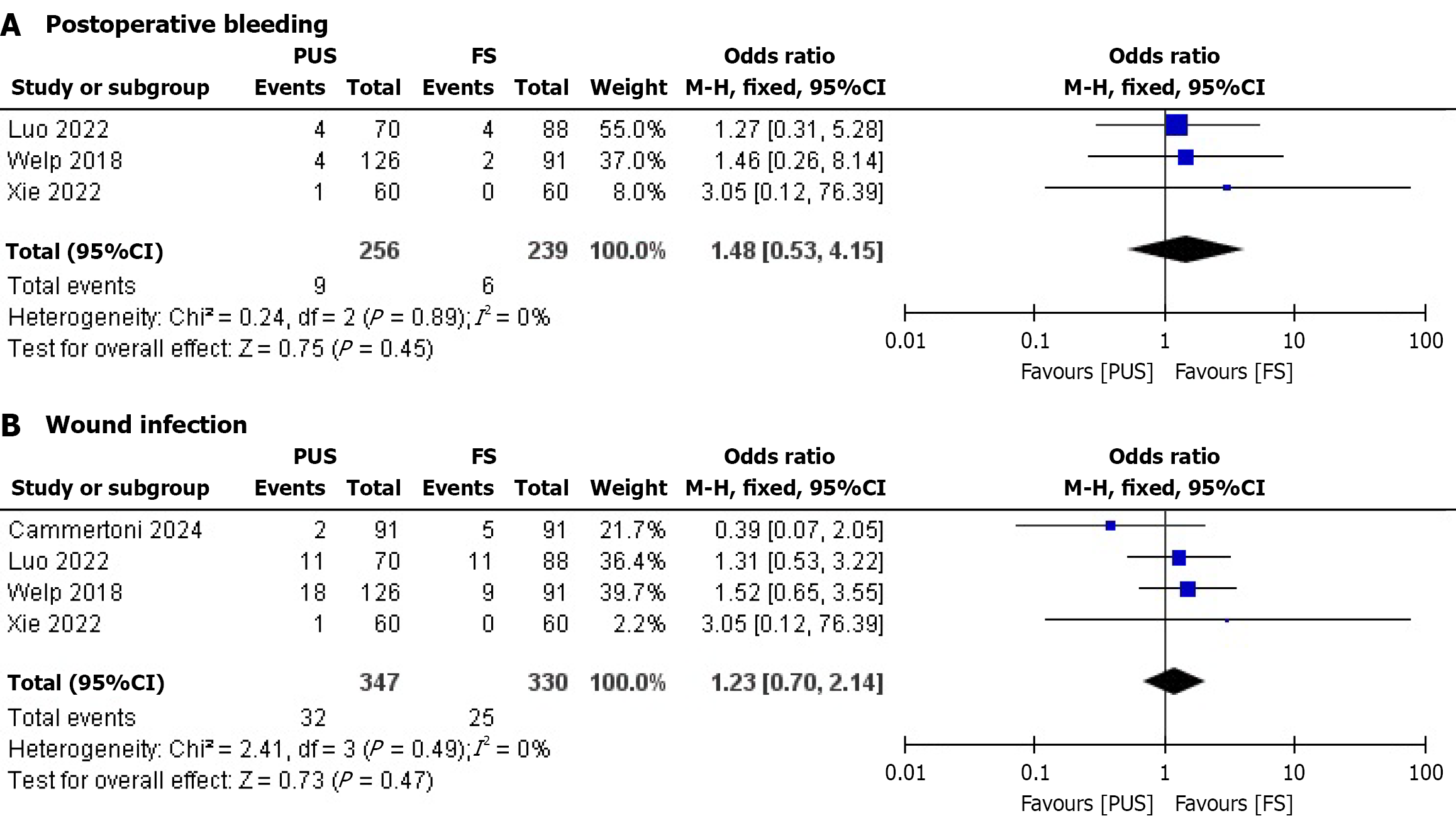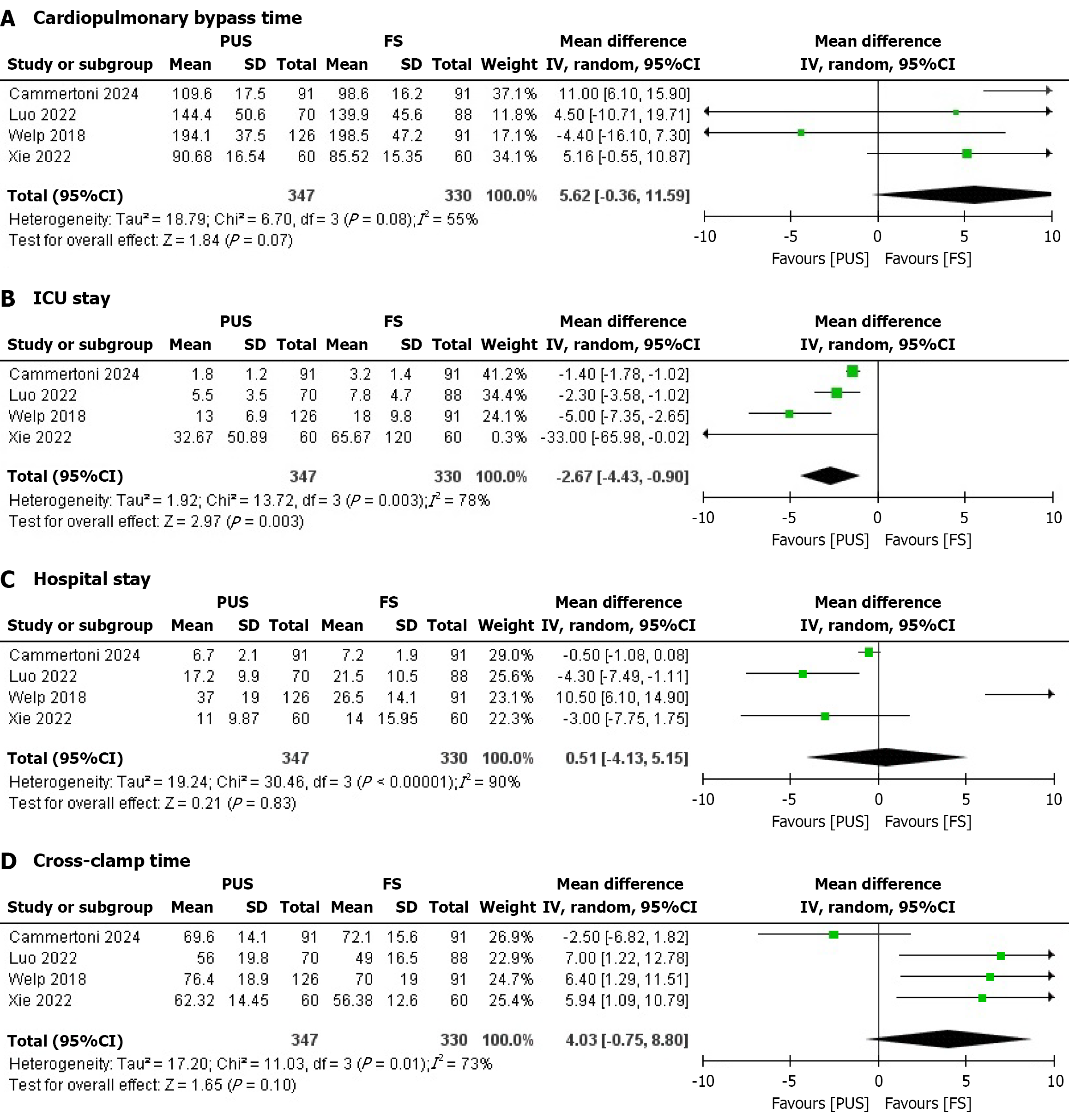Copyright
©The Author(s) 2025.
World J Cardiol. Sep 26, 2025; 17(9): 110838
Published online Sep 26, 2025. doi: 10.4330/wjc.v17.i9.110838
Published online Sep 26, 2025. doi: 10.4330/wjc.v17.i9.110838
Figure 1
PRISMA flowchart outlining the literature screening process, study selection, and exclusion criteria.
Figure 2 Forest plots comparing outcomes between partial upper sternotomy and full sternotomy in obese patients undergoing aortic valve replacement.
A: Renal failure; B: Atrial fibrillation; C: Reexploration. PUS: Partial upper sternotomy; FS: Full sternotomy.
Figure 3 Forest plots comparing outcomes between partial upper sternotomy and full sternotomy in obese patients undergoing aortic valve replacement.
A: Postoperative bleeding; B: Wound infection. PUS: Partial upper sternotomy; FS: Full sternotomy.
Figure 4 Forest plots comparing outcomes between partial upper sternotomy and full sternotomy in obese patients undergoing aortic valve replacement.
A: Cardiopulmonary bypass time; B: Intensive care unit stay; C: Hospital stay; D: Cross-clamp time. PUS: Partial upper sternotomy; FS: Full sternotomy; ICU: Intensive care unit.
- Citation: Gupta A, Chikhradze T, Arshad A, Sakrani RA, Khan Z, Getahun M, Shaikh SRA, Syed W, Baweja T, Remesan A, Lewis C, Doshi J, Khawar M, Hussain A, Khawar MM. Partial upper sternotomy vs full median sternotomy in obese patients undergoing aortic valve replacement: A meta-analysis. World J Cardiol 2025; 17(9): 110838
- URL: https://www.wjgnet.com/1949-8462/full/v17/i9/110838.htm
- DOI: https://dx.doi.org/10.4330/wjc.v17.i9.110838
















